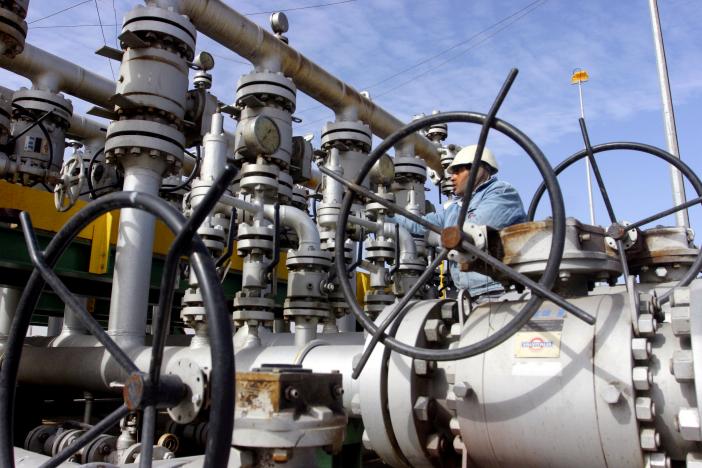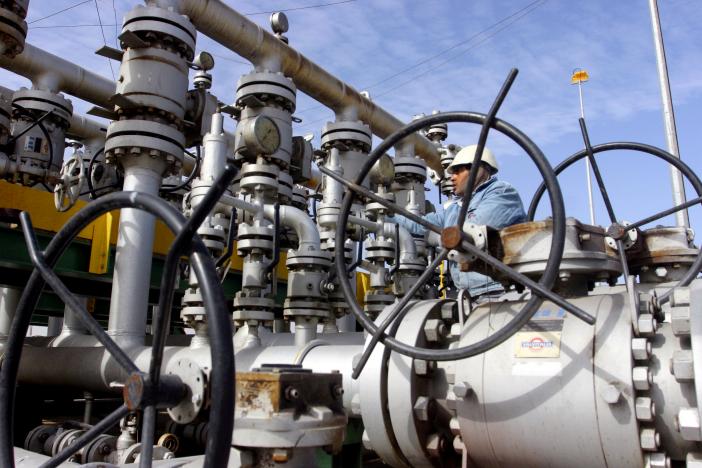Oil slips on rising U.S. inventories, awaits EIA data

A worker checks the valves at Al-Sheiba oil refinery in Basra, Iraq, January 26, 2016. REUTERS/Essam Al-Sudani/File Photo

(Reuters) Oil prices fell on Wednesday after builds in U.S. inventories reinforced expectations that increasing shale output this year would reduce the impact of production cuts by OPEC and other major exporters.
Benchmark Brent crude LCOc1 was down 1 percent or 54 cents a barrel at $54.90 by 1024 GMT. U.S. light crude CLc1 was down 52 cents at $52.66.
Weekly inventory data from the American Petroleum Institute (API) late on Tuesday showed U.S. crude, gasoline and diesel stocks rose more than expected last week.
The U.S. government’s Energy Information Administration (EIA) reports its own data at 1530 GMT and traders will look to see whether the official figures confirm the industry’s numbers.
“The API report was bearish,” said Tamas Varga, senior analyst at London brokerage PVM Oil Associates. “Expect more pressure on prices if the EIA shows similar numbers.”
Oil prices have found support in recent weeks from plans by the Organization of the Petroleum Exporting Countries and other producers to reduce output.
Around 1.5 million barrels per day (bpd) has already been taken out of the market from about 1.8 million bpd agreed by oil majors starting on Jan. 1, energy ministers said on Sunday, as producers look to reduce oversupply.
Bernstein Energy said global oil inventories declined by 24 million barrels to 5.7 billion barrels in the fourth quarter of last year from the previous quarter. The amount remaining equates to about 60 days of world oil consumption.
But as OPEC is cutting, U.S. shale output is rising.
U.S. oil production has increased by more than 6 percent since mid-2016, although it remains 7 percent below its 2015 peak. Output is back to levels reached in late 2014, when strong U.S. crude output contributed to a crash in oil prices.
President Donald Trump’s promise to support the U.S. oil industry has encouraged analysts to revise up their forecasts of growth in U.S. oil production, which is already benefiting from higher prices.
A push by Republicans in the U.S. House of Representatives for a shift to border-adjusted corporate tax could help propel U.S. crude prices higher than global benchmark Brent, triggering large-scale domestic production, according to Goldman Sachs.
